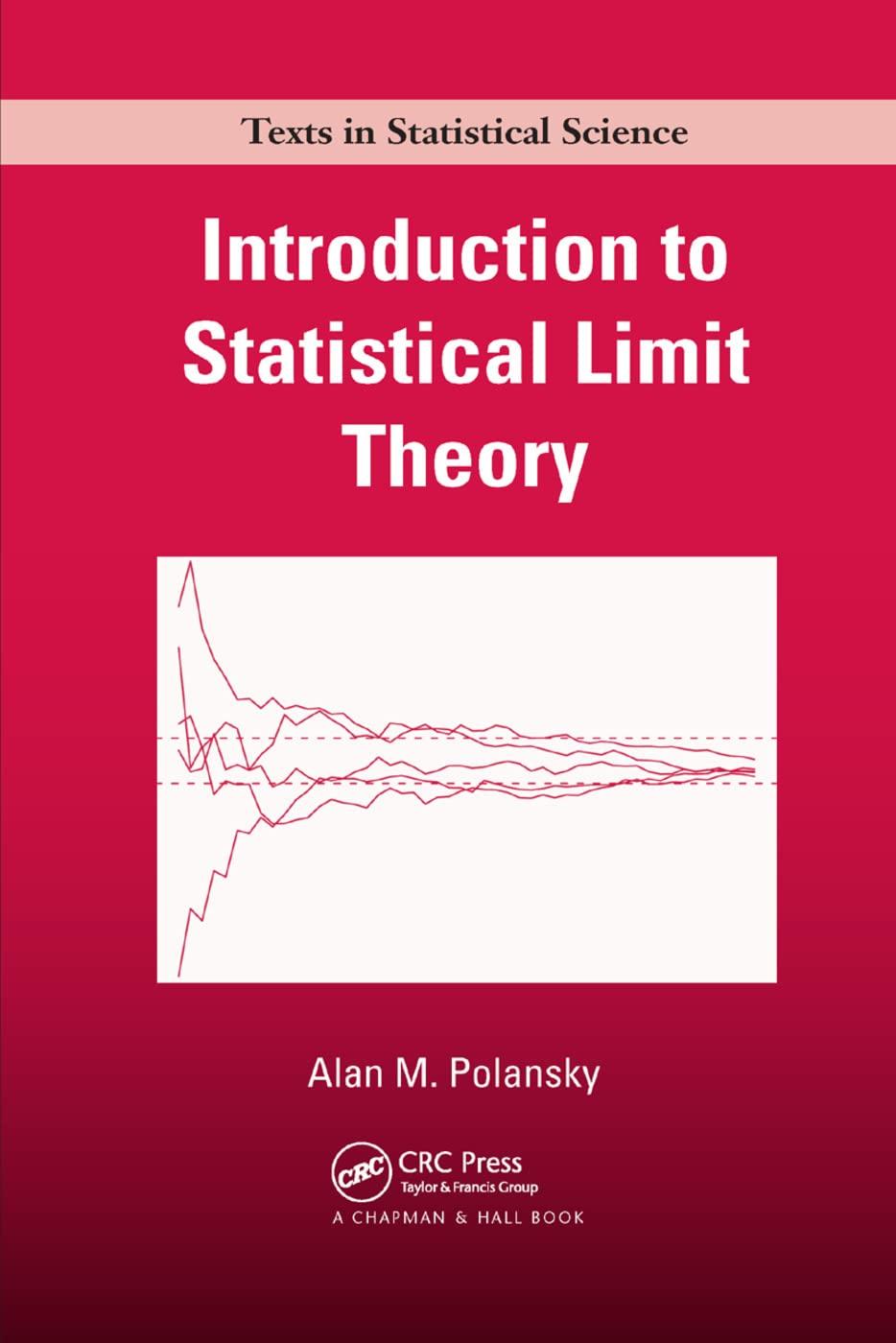Random walks are a special type of discrete stochastic process that are able to change from one
Question:
Random walks are a special type of discrete stochastic process that are able to change from one state to any adjacent state according to a conditional probability distribution. This experiment will investigate the properties of random walks in one, two, and three dimensions.
a. Consider a sequence of random variables \(\left\{X_{n}ight\}_{n=1}^{\infty}\) where \(X_{1}=0\) with probability one and \(P\left(X_{n}=k \mid X_{n-1}=xight)=\frac{1}{2} \delta\{k ;\{x-1, x+1\}\}\), for \(n=2,3, \ldots\). Such a sequence is known as a symmetric one-dimensional random walk. Write a program in \(\mathrm{R}\) that simulates such a sequence of length 1000 and keeps track of the number of times the origin is visited after the initial start of the sequence. Use this program to repeat the experiment 100 times to estimate the average number of visits to the origin for a sequence of length 1000.
b. Consider a sequence of two-dimensional random vectors \(\left\{\mathbf{Y}_{n}ight\}_{n=1}^{\infty}\) where \(\mathbf{Y}_{1}^{\prime}=(0,0)\) with probability one and \(P\left(\mathbf{Y}_{n}=\mathbf{y}_{n} \mid \mathbf{Y}_{n-1}=\mathbf{y}ight)=\frac{1}{4} \delta\left\{\mathbf{y}_{n}-ight.\) \(\mathbf{y} ; D\}\), for \(n=2,3, \ldots\) where \(D=\{(1,0),(0,1),(-1,0),(0,-1)\}\). Such a sequence is known as a symmetric two-dimensional random walk. Write a program in \(\mathrm{R}\) that simulates such a sequence of length 1000 and keeps track of the number of times the origin is visited after the initial start of the sequence. Use this program to repeat the experiment 100 times to estimate the average number of visits to the origin for a sequence of length 1000.
c. Consider a sequence of three-dimensional random vectors \(\left\{\mathbf{Z}_{n}ight\}_{n=1}^{\infty}\) where \(\mathbf{Z}_{1}^{\prime}=(0,0,0)\) with probability one and \(P\left(\mathbf{Z}_{n}=\mathbf{z}_{n} \mid \mathbf{Z}_{n-1}=\mathbf{z}ight)=\frac{1}{6} \delta\left\{\mathbf{z}_{n}-ight.\) \(\mathbf{z} ; D\}\), for \(n=2,3, \ldots\) where
\[D=\{(1,0,0),(0,1,0),(0,0,1),(-1,0,0),(0,-1,0),(0,0,-1)\}\]
Such a sequence is known as a symmetric three-dimensional random walk. Write a program in \(\mathrm{R}\) that simulates such a sequence of length 1000 and keeps track of the number of times the origin is visited after the initial start of the sequence. Use this program to repeat the experiment 100 times to estimate the average number of visits to the origin for a sequence of length 1000 .
d. The theory of Markov chains can be used to show that with probability one, the one and two-dimensional symmetric random walks will return to the origin infinitely often, whereas the three-dimensional random walk will not. Discuss, as much as is possible, the properties of the probability of the process visiting the origin at step \(n\) for each case in terms of Theorem 2.17. Note that Theorem 2.18 cannot be applied to this case because the events in the sequence are dependent. Discuss whether your simulation results provide evidence about this behavior. Do you think that a property such as this could ever be verified empirically?
Step by Step Answer:






